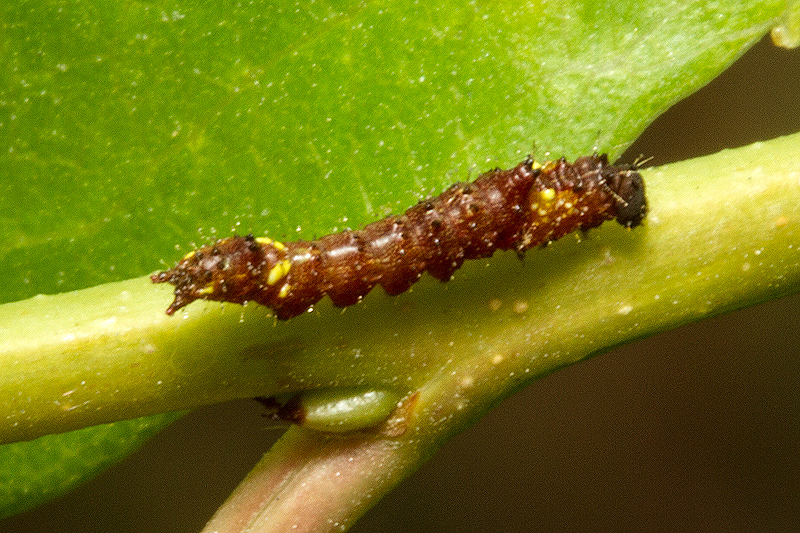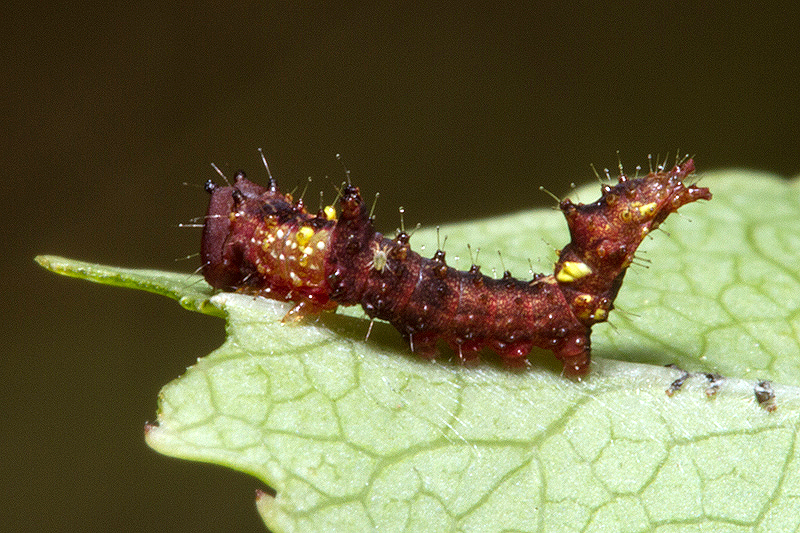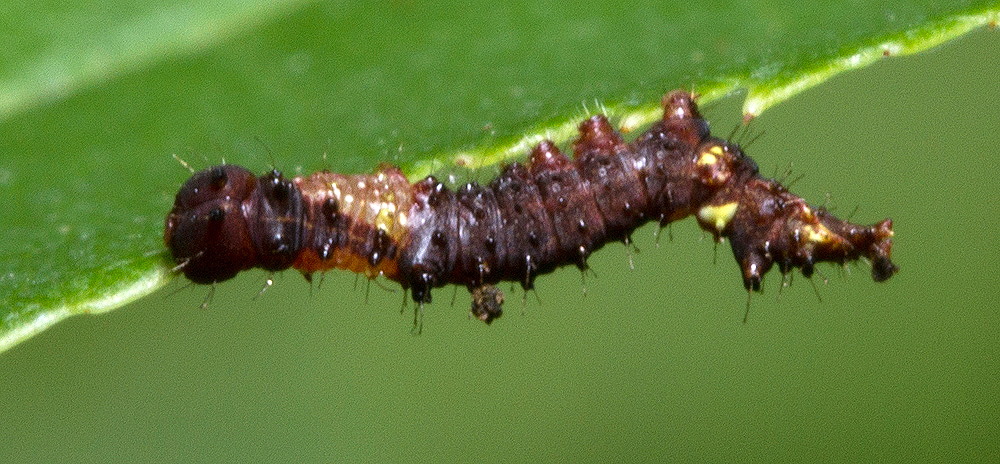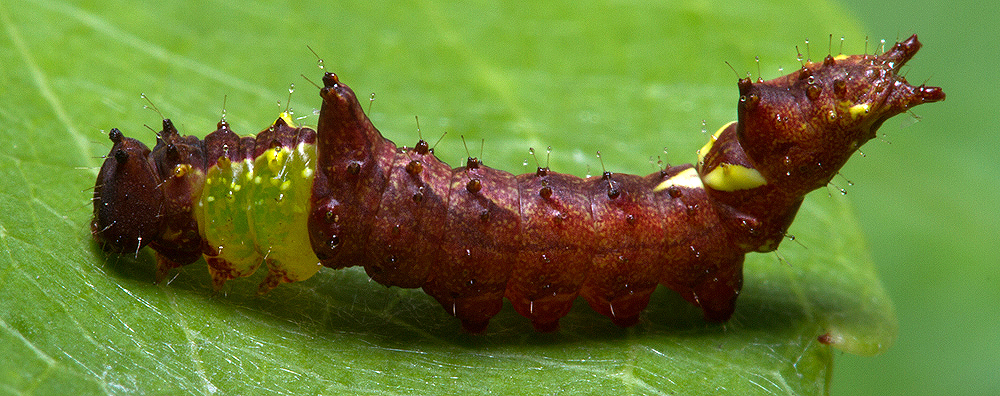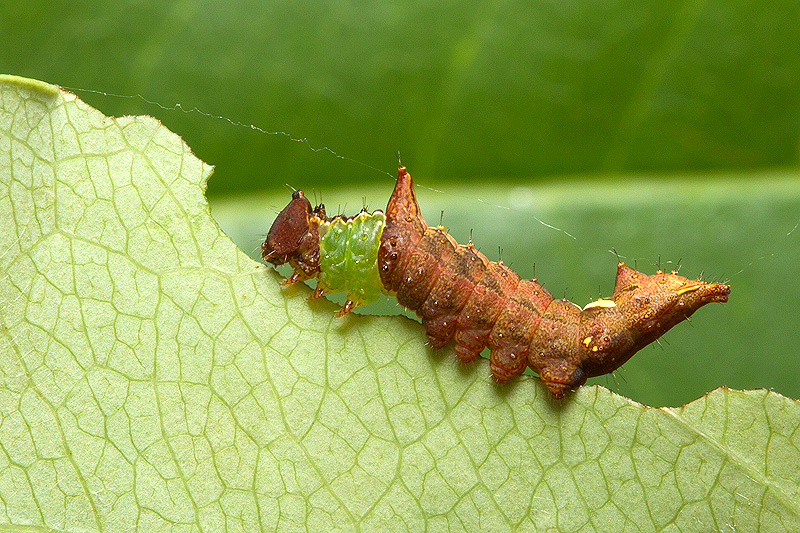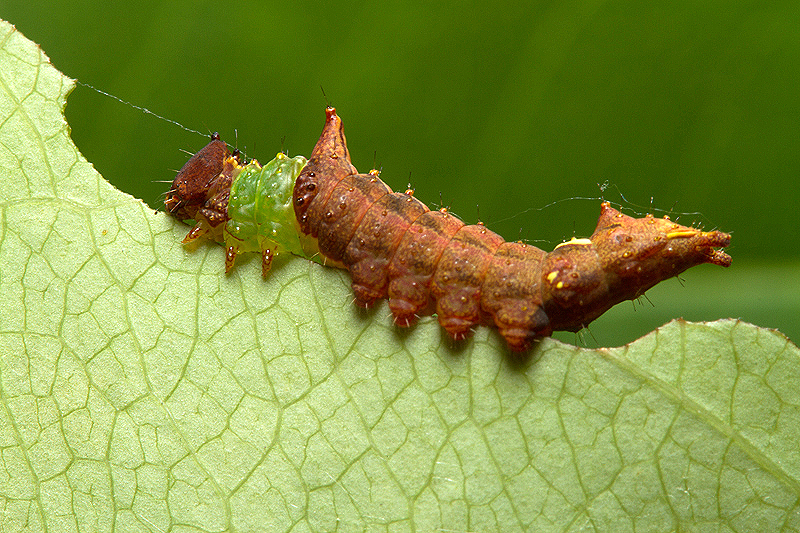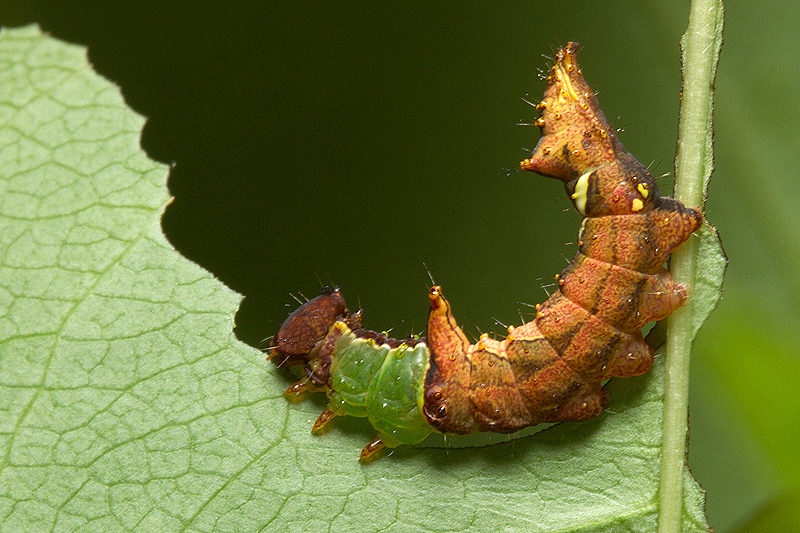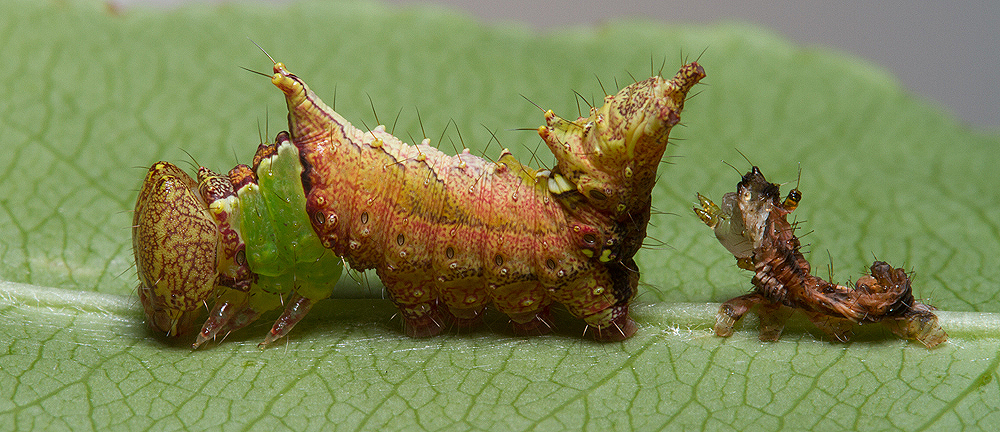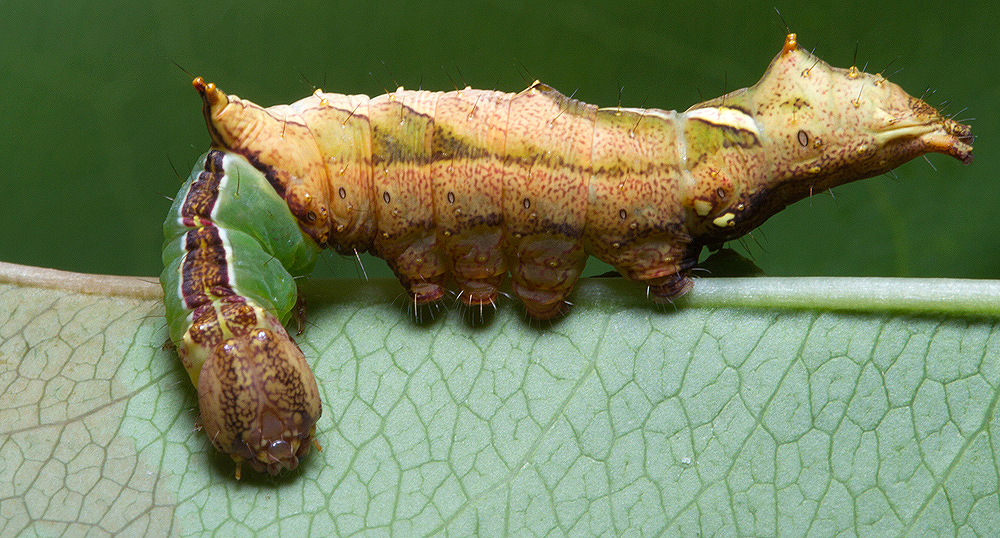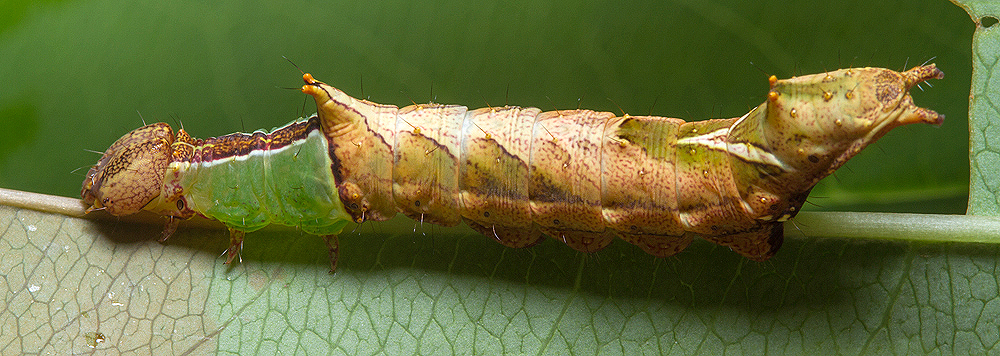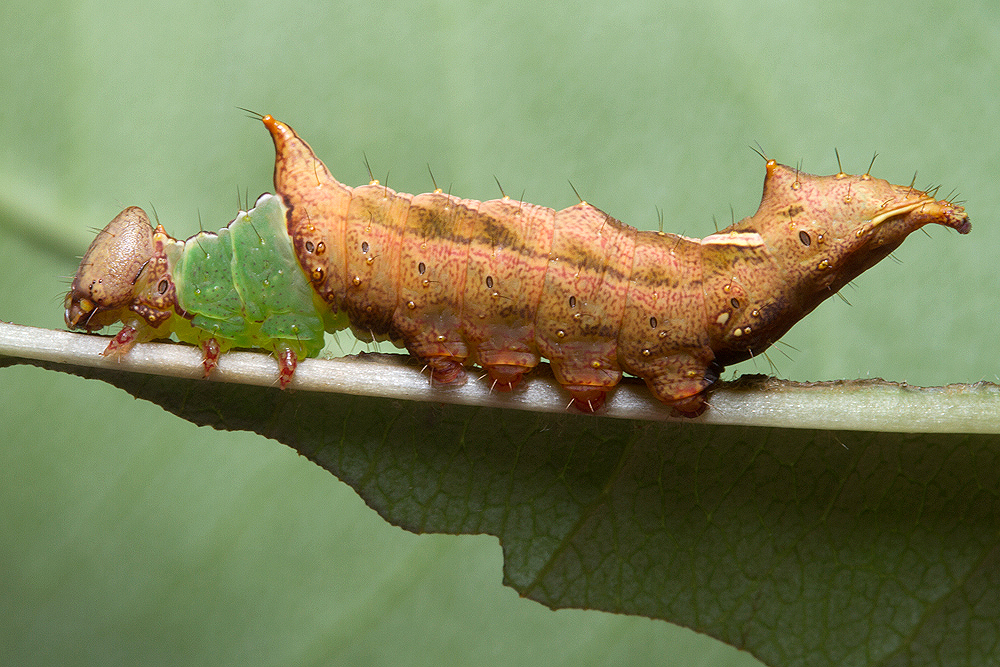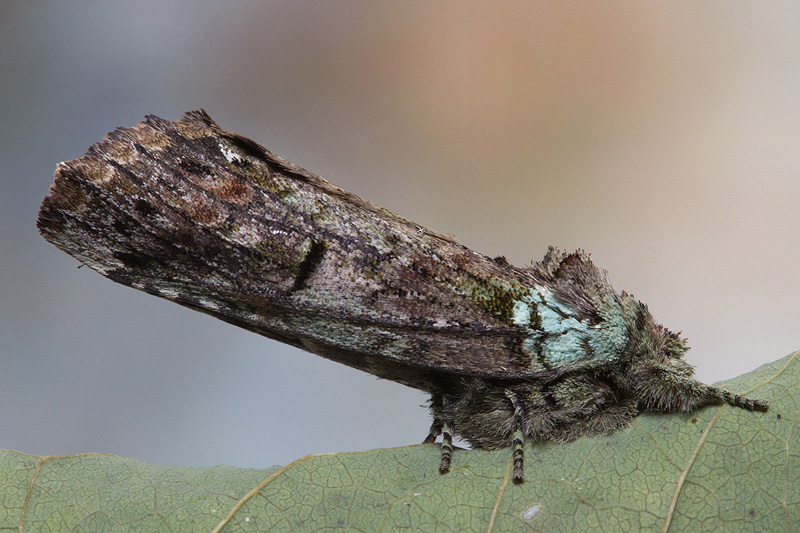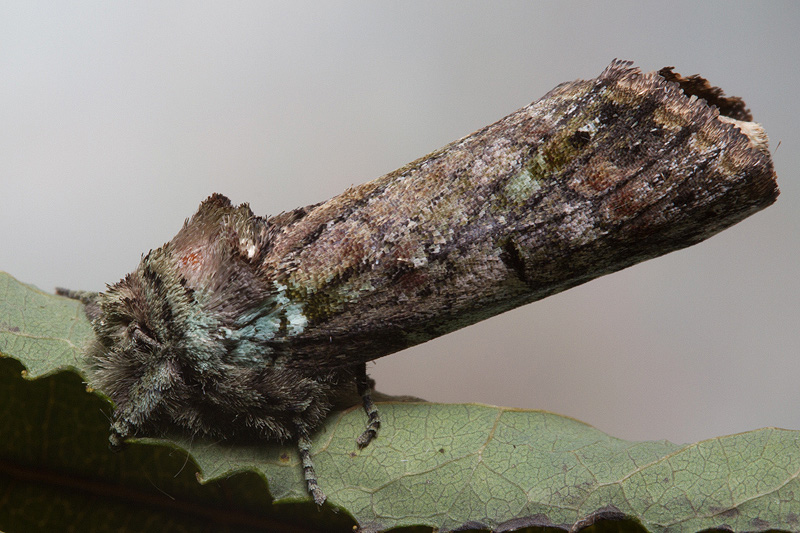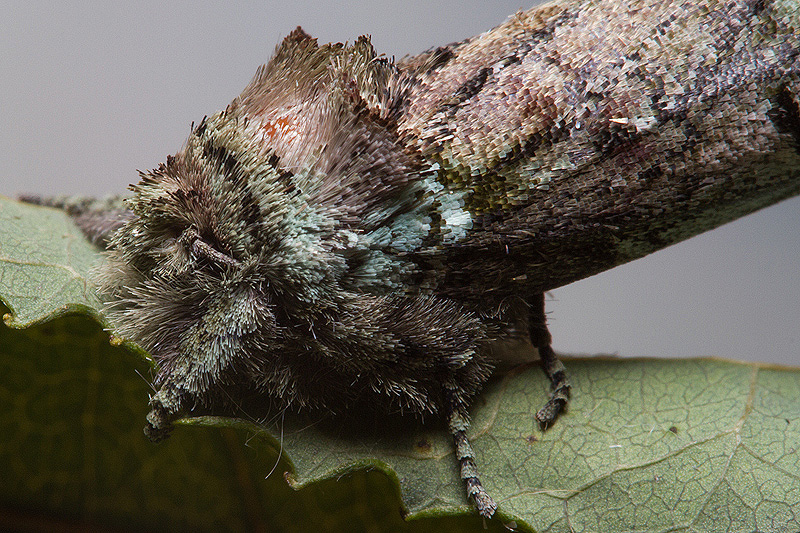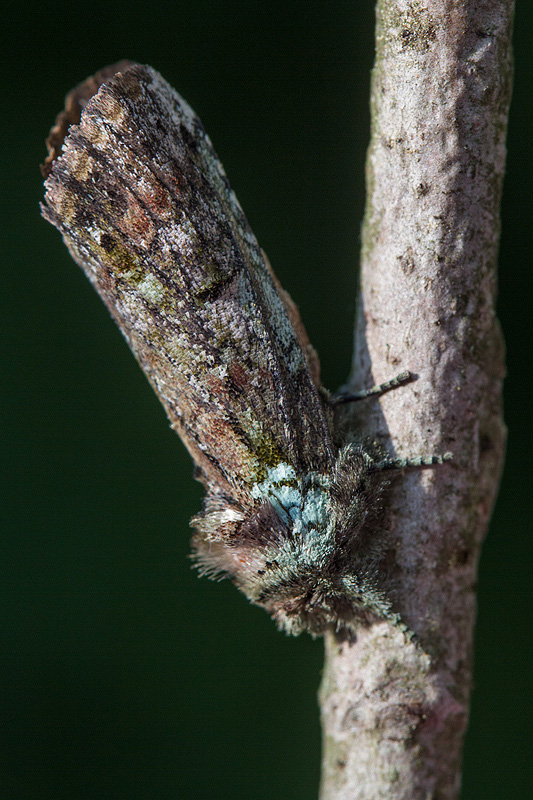Unicorn Prominent (Schizura unicornis) caterpillar - July-August, 2014 - Amston, Connecticut Stan Malcolm Photos |
mAir Line Trail Home Page |
July 2nd - Early (first or second?) instar larva on scrub cherry along the Air Line Trail as it passes through Raymond Brook Marsh. |
July 3rd. One of two caterpillars found under the same circumstances. Both collected for rearing. Note the droplets on spines arising from tubercles. Defensive secretion? Note also the mite crawling over the 2nd abdominal segment. Note also the three nips in the leaf midrib behind the caterpillar, perhaps to prevent plant toxins flowing to where the caterpillar is feeding. |
July 6th. Same caterpillar. |
July 6th. The other caterpillar after a molt. Still has droplets on the spines in this instar. |
July 10th. Growing larger. |
Tail held aloft is a common Prominent (Family Notodontidae) behavior. (Some species have the terminal abdominal prolegs extended and capable of beeing inflated and lashed from side to side when disturbed. See: https://www.youtube.com/watch?v=dv-N-xRSIWg) |
Great disruptive coloration, masking the body shape; plus great mimicry of feeding damage, resulting in browning of leaf edge. |
July 12th. Just after a molt. Cast skin remains behind. Head and true legs disproportionately large compared to the body - which will soon fill out. (I really enjoy this photo. The cast skin reminds me of a faithful dog following its master.) |
July 14th. The body is growing longer... |
...and stouter. |
|
|
|
No droplets on the spines and tubercles below them all but gone. |
August 4th. The adult moth has emerged. |
Note how the long and leg body scales help it blend into the substrate - in this case an unnatural resting place, a dried leaf. |
The pale blue-green scales resemble a bit of lichen, the green scales a bit of algae or moss. |
Ah ha! On a twig, it blends in as a broken off bit of twig. There was a reason the wings curl around the body, and the posterior body is held away from the substrate. |
